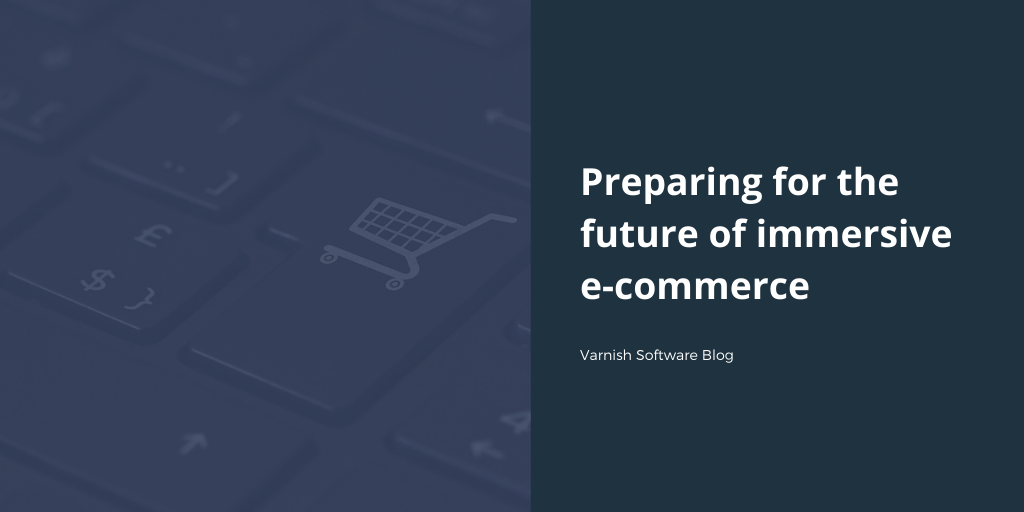
New technologies are ratcheting up consumer expectations of their e-commerce experiences. For example, China’s Singles Day has taken the excitement to new levels, with major retailers and brands hiring major global stars as spokespeople, streaming exclusive live video or interactive events. And the effort has paid off, with November 11, 2019 (the last Singles Day) yielding a whopping 58 billion dollars in a 24-hour period, dwarfing the US-based Cyber-Five e-commerce holiday, which generated just 28 billion dollars just a few weeks later.
Live streaming as a conversion engine
Suddenly your consumers are expecting an immersive, multimedia shopping experience - not just a quick click through your inventory and a smooth exit from the shopping cart and checkout process. McKinsey highlights the 2019 Singles Day extravaganza, led by Chinese giant Alibaba. They pulled out all the stops, hiring pop star, Taylor Swift, to perform for a live streaming opening gala. Video streaming turned out to be part of the sales process itself - video sessions included celebrities, industry professionals, opinion leaders who demoed products and did live, real-time Q&A sessions, which gave consumers a greater sense of confidence in buying (and clearly, buying more).
Naturally this move is powered by the ability to live stream to massive audiences. The saturation of 4G networks has, according to McKinsey, made video emerge “as a medium for more immersive and entertaining brand experiences”. Let’s just imagine what upcoming 5G network availability will do.
Fun doesn’t stop with streaming: Tailored for the shopper
Retailers aim to differentiate their offer by bringing what can only be called spectacle to the shopping experience. The future of e-commerce is this kind of spectacle, seamlessly delivered. It is virtual, 3D and augmented reality shopping - tailored to each shopper.
“Tailored shopping” is a bit like tailoring a suit to fit, and sounds strangely old-fashioned in a convenience-driven, grab-and-go market. Yet, in many cases the future will literally be about tailoring. As Deloitte describes in a report on augmented reality in e-commerce, the brand Levi’s hinted that in the not-distant future, retailers could stop stocking pre-sized inventory and instead perform individual body scanning for made-to-order garments.
Augmented shopping
This kind of change will ultimately bring the higher-end, individualized experience to more people, and alter the retail business, including large-scale manufacturing and supply chains. Augmented shopping can help deliver precisely what consumers want and create sustainable efficiencies in the retailers’ business, i.e. not manufacturing clothes en masse and shipping them all over the world, only to have them be discarded.
Similarly, AR/3D technologies can let consumers interact with items online and mix and match their preferences, virtually trying out or trying on the items they’ve built, all without leaving their homes. This is going to change things for companies across industries - from clothing to cosmetics, from furnishings to white goods. We already see it to some extent in things like the automotive industry, where you can build your own car to your specifications.
Delivering the experience
We’re not there yet, but these are some of the considerations for the future of retail, particularly in the e-commerce space. To deliver the big fireworks-and-all e-commerce experience for consumers, once again, must consider the technology that lets all of this magic happen. It’s got to be in place. Standards groups have been tackling the need for a single standard to deliver accelerated 3D graphics on the web as well as an asset standard for 3D (glTF) to let any application or browser download and render 3D products. And how will that experience scale when delivered over the web?
Powering this new reality requires a technical framework that can deliver all of this at scale, even in high-traffic, high-demand periods. Varnish can help you get the fundamentals right. Contact us to learn more.
/VS-logo-2020-197x60.png?width=136&height=60&name=VS-logo-2020-197x60.png)

